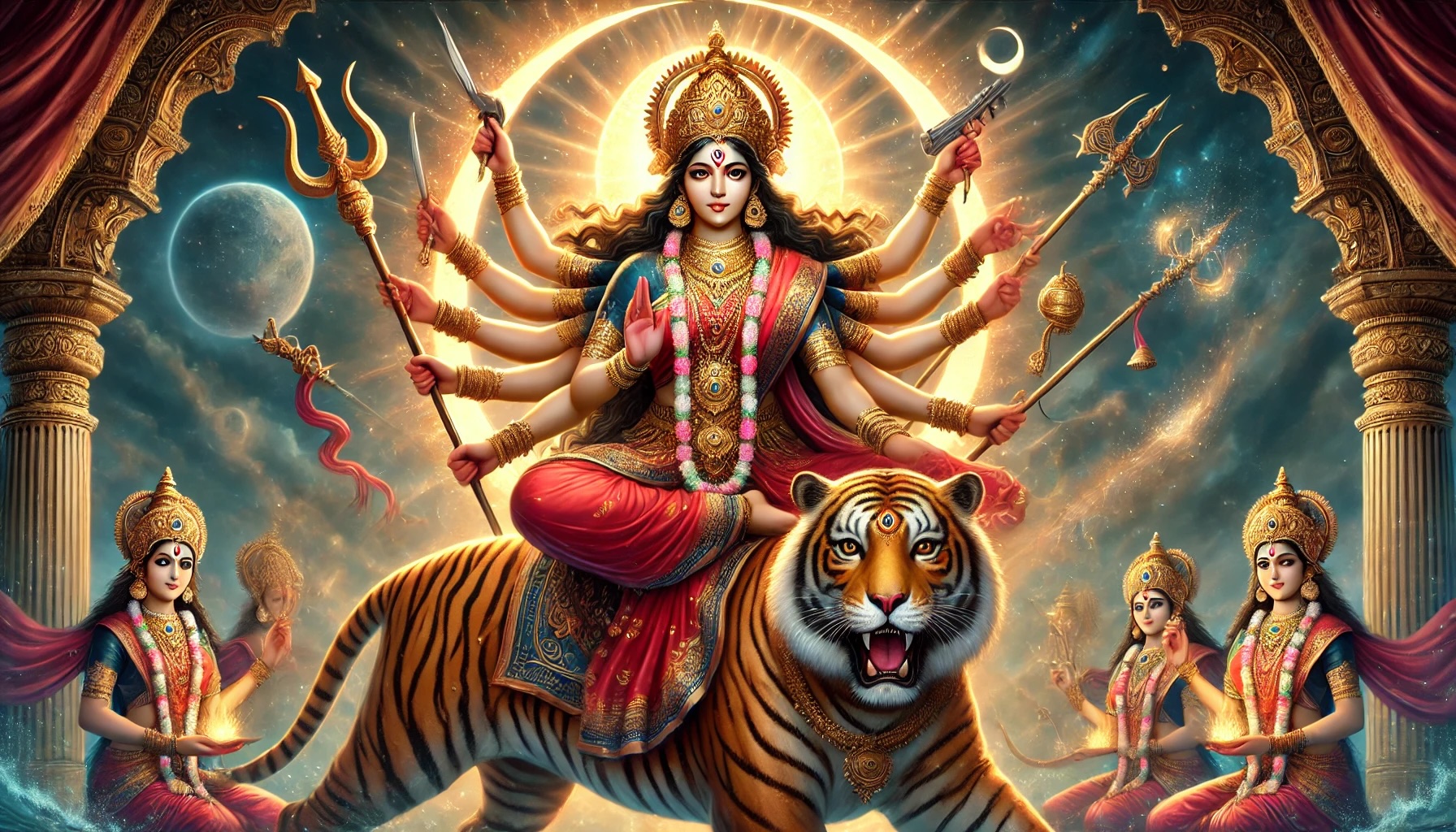The Third Day of Navaratri: Worship of Goddess Chandraghanta

As the auspicious festival of Navaratri continues, devotees across the country celebrate the third day, dedicated to Goddess Chandraghanta, the third form of Goddess Durga. This day, marked by reverence and rituals, carries great spiritual significance, symbolizing the triumph of courage and protection over evil.
Importance of Goddess Chandraghanta
Goddess Chandraghanta is known for her fierce yet protective nature. She represents the warrior form of Goddess Parvati, who embodies strength, grace, and the destruction of evil. Her name is derived from the crescent moon (Chandra) that adorns her forehead in the shape of a bell (Ghanta). Riding a ferocious tiger, she is depicted with ten arms, each holding powerful weapons, symbolizing her readiness to combat negative forces and protect her devotees.
Although she appears fierce, her blessings bring peace, prosperity, and a sense of calm. Chandraghanta is revered as the Goddess who dispels fear and anxiety while instilling bravery in the hearts of her devotees. Worshiping her on this day is believed to empower individuals to confront their inner and outer challenges with valor.
Rituals to be Followed
On Aswin Shukla Tritiya, devotees across Nepal and the Indian subcontinent follow specific rituals to honor Goddess Chandraghanta:
- Morning Prayers: Devotees begin their day with early morning prayers, lighting lamps and offering flowers to the deity. Special emphasis is placed on invoking Goddess Chandraghanta’s blessings for courage and protection.
- Offerings: Milk and sweets made from milk, particularly kheer, are considered her favorite offerings. These symbolize purity and devotion. It is believed that offering milk on this day can bring about serenity and balance in one’s life.
- Chanting and Meditation: Devotees chant mantras and meditate on the Manipura Chakra (solar plexus chakra), which represents courage and inner strength. This chakra is associated with Goddess Chandraghanta, and her worship is said to activate it, increasing confidence and removing fear.
- Fasting: Many devotees observe a day-long fast, consuming only fruits or milk-based food as a mark of devotion. This practice symbolizes spiritual cleansing and purity.
Significance of Worshiping Goddess Chandraghanta
The third day of Navaratri is seen as a day of transformation. It marks the shift from the nurturing, gentle form of Parvati to her powerful, warrior-like manifestation as Chandraghanta. This transformation is symbolic of the inner strength needed to confront life’s difficulties and the ability to rise above challenges with determination and courage.
Goddess Chandraghanta’s Achievements: In mythology, Goddess Chandraghanta is renowned for her fierce battles against demons. One of her significant achievements was the destruction of Mahishasura, the buffalo demon, who symbolizes the destructive ego and arrogance. By defeating him, she restored cosmic balance and protected the universe from chaos and evil. Her role as a protector is remembered by devotees, who seek her blessings to overcome personal and societal evils.
Celebrations Across the Country
Temples across Nepal, especially Shakti Peethas, witness large crowds of devotees offering prayers and performing rituals. Kirtans and bhajans are sung in praise of the Goddess, and special pujas are conducted in homes and community spaces.
As the festival progresses, the focus shifts from spiritual awakening to personal empowerment, with the third day being especially significant for invoking inner strength and courage. Devotees believe that by worshiping Goddess Chandraghanta, they are blessed with protection, peace, and the ability to overcome all challenges.
Navaratri continues to be a reminder of the divine feminine power and its influence in both personal and cosmic spheres, with each day bringing devotees closer to spiritual enlightenment.
Navaratri



![From Kathmandu to the World: How Excel Students Are Winning Big [Admission Open]](https://nepalaaja.com/img/70194/medium/excel-college-info-eng-nep-2342.jpg)
